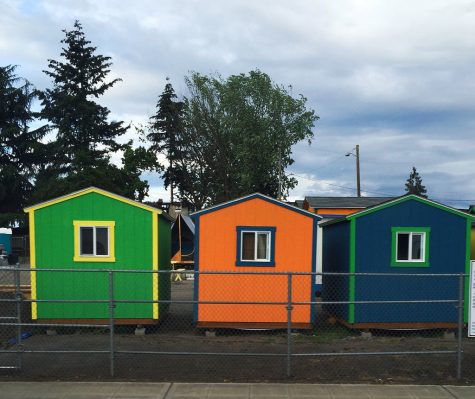Fences Miss Heart of Problem

The Editorial Voice of The Miter
February 20, 2018
From Ballard to Sodo, fences are springing up around town to prevent homeless populations from living underneath bridges.
These spiked, ten-foot-tall structures set boundaries marking where homeless can and cannot sleep.
Although the city of Seattle has established six authorized tent camps in the last two years, according to Scott Greenstone of The Seattle Times, there are still many homeless who sleep without shelter over their heads. Under bridges and overpasses may not be the safest place, but at least they provide some sort of shield from the elements.
The fencing on Northwest Leary Way around the Ballard Bridge cost a whopping $100,000, according to Greenstone.

A community of Tiny Houses in South Seattle were painted bright, cheery colors.
With expenses so high, we wonder whether this money was put toward the right use.
Tiny Houses Homeless Community Projects is a major part of Seattle’s Low Income Housing Institute. Tiny Houses builds small 8 by 12 feet homes, the materials for which only cost $2,200 per house, according to Sharon Lee of The Seattle Times. The high sum that went toward building spiked fence could have funded materials for 45 houses — taking at least that amount of people off the street, more if you include families.
The fences are working firm in their goal: to protect the infrastructure of the bridges from accidental fires, according to Greenstone. However, their presence does not penetrate the root of the problem: sheltering the homeless. If men and women did not have to rely on bridges and overpasses as their only shelter, then society would not have to worry about them lighting fires underneath in their meager attempts to stay warm.
Homelessness is a very complex problem, and people tend to forget the different facets of the issue. Some need rehabilitation from drug use, some need help with disabilities, others simply need financial lessons. Every individual is different, but all have the same right to shelter.
We believe society needs to remain educated in all issues related to inner city homelessness in order to make a true difference in eradicating it.
It falls upon every individual to improve the overall conditions of the city by being aware of all aspects of city life, past and present.





